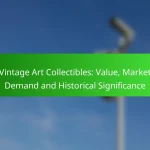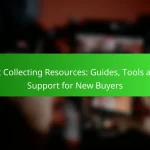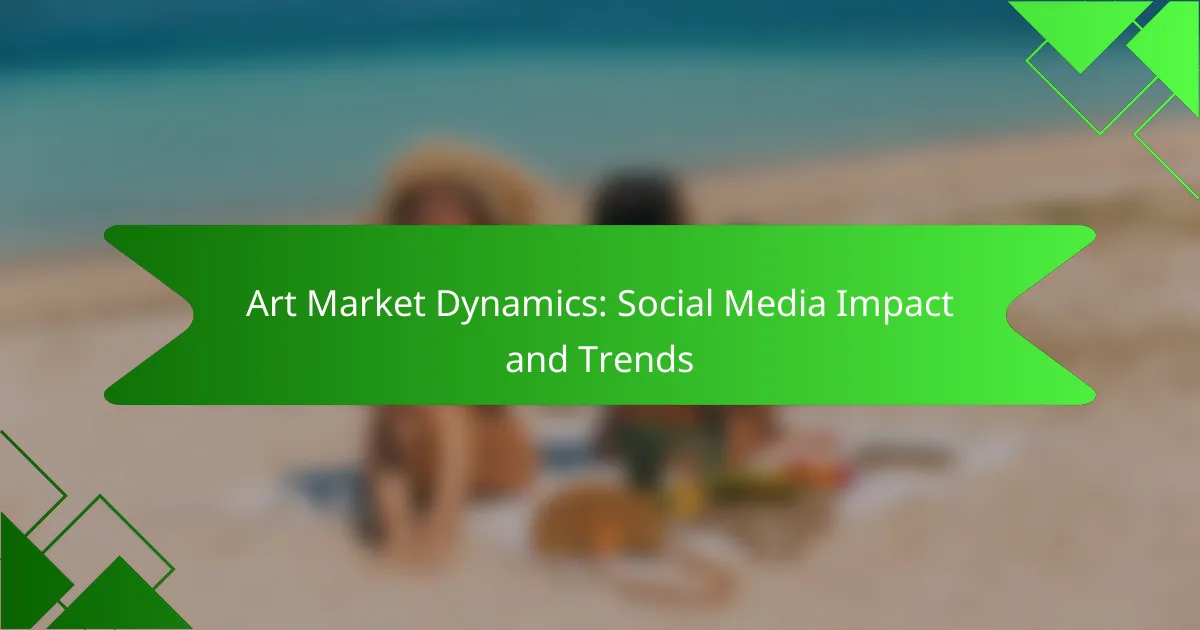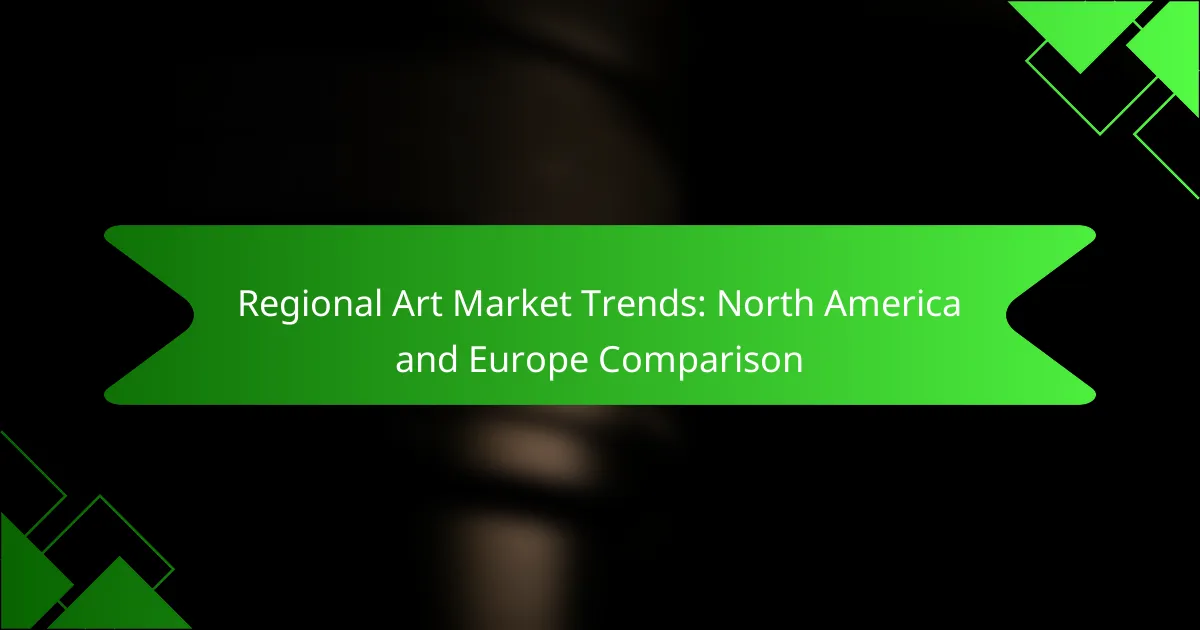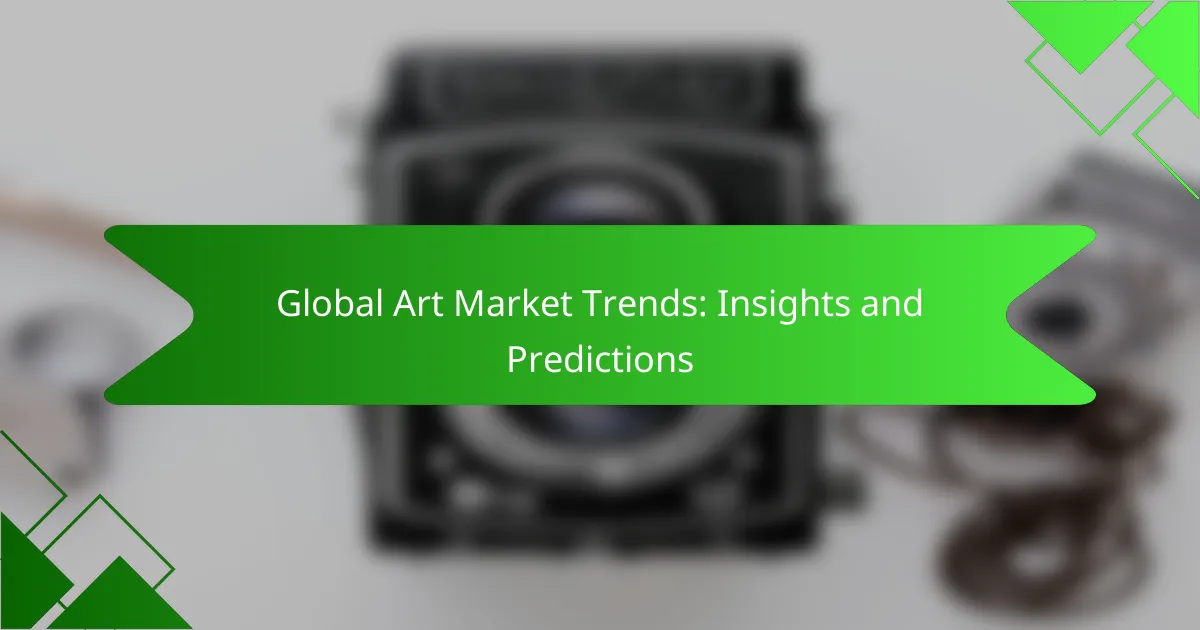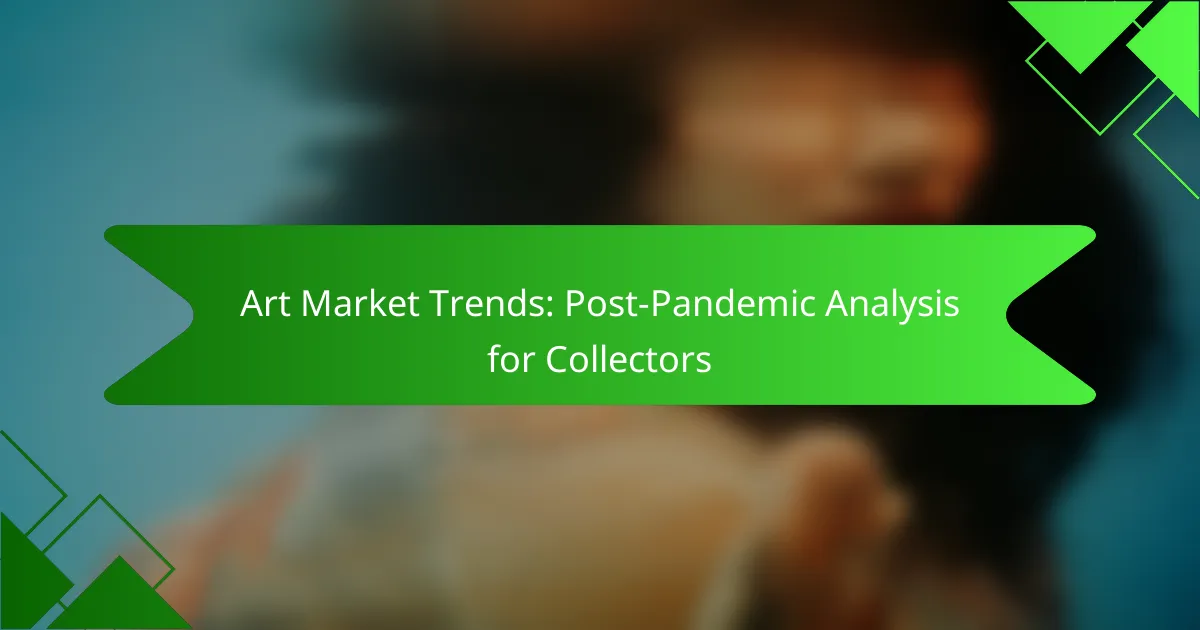The art market is undergoing a significant transformation due to the influence of social media, which allows artists and galleries to showcase their work and engage directly with audiences. This shift has led to new trends such as the rise of digital art sales and virtual exhibitions, fundamentally changing how art is marketed and sold. By leveraging platforms like Instagram and TikTok, creators can enhance their visibility and connect with potential buyers in innovative ways.
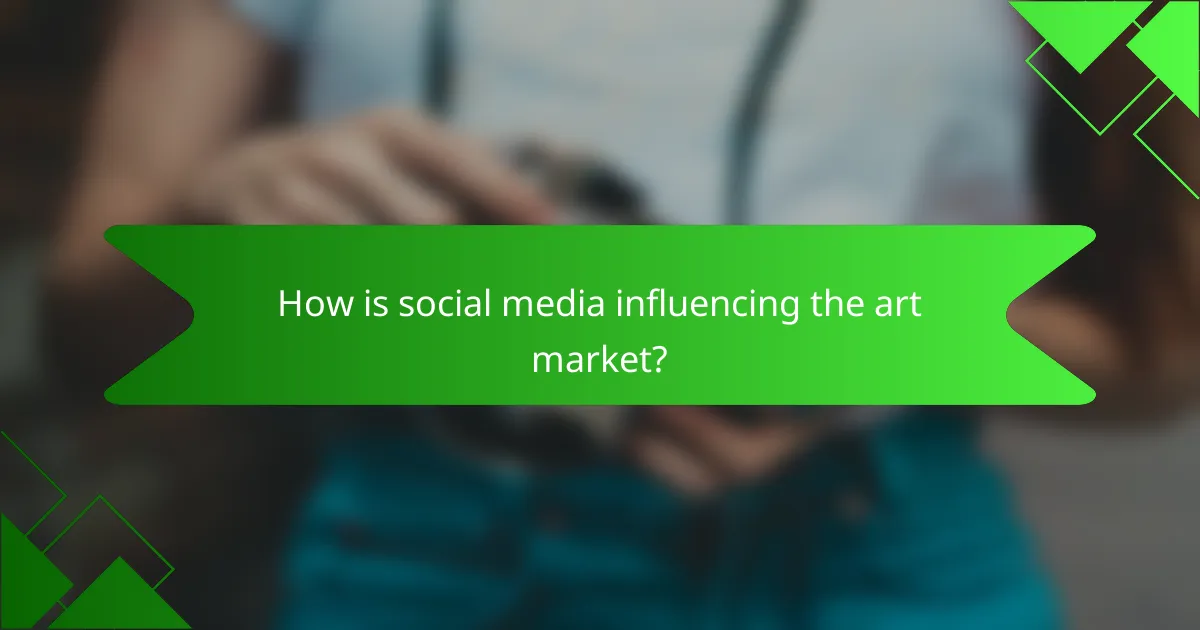
How is social media influencing the art market?
Social media is reshaping the art market by providing platforms for artists and galleries to showcase their work, connect with audiences, and drive sales. This digital presence enhances visibility, creates new sales avenues, and fosters engagement with potential buyers.
Increased visibility for artists
Social media platforms like Instagram and TikTok allow artists to reach a broader audience than traditional galleries. By sharing their work online, artists can gain followers and attract attention from collectors and art enthusiasts worldwide.
Regularly posting high-quality images and engaging content can significantly increase an artist’s visibility. Utilizing hashtags and participating in art challenges can further enhance their reach and connect them with potential buyers.
New sales channels for galleries
Galleries are leveraging social media to create new sales channels, moving beyond physical exhibitions. Online galleries and social media shops enable galleries to showcase their artists’ works directly to consumers, facilitating immediate purchases.
Many galleries host virtual exhibitions or live sales events on platforms like Facebook and Instagram, allowing them to engage with audiences in real-time. This approach can lead to increased sales and a more dynamic interaction with potential clients.
Enhanced audience engagement
Social media fosters direct communication between artists, galleries, and their audiences. This interaction allows for immediate feedback and discussions about artworks, which can enhance the overall experience for both parties.
Engaging content such as behind-the-scenes videos, artist Q&As, and interactive polls can deepen audience interest and loyalty. Regular engagement helps build a community around an artist or gallery, encouraging repeat visits and purchases.
Real-time market feedback
Social media provides artists and galleries with real-time feedback on their work, helping them understand market preferences and trends. By monitoring likes, shares, and comments, they can gauge which pieces resonate most with their audience.
This immediate feedback loop allows for quick adjustments in marketing strategies and artwork presentation. Artists can experiment with styles and themes based on audience reactions, potentially leading to more successful sales.
Global reach for local artists
Social media breaks down geographical barriers, enabling local artists to gain international recognition. By sharing their work online, they can attract collectors and art lovers from different countries, expanding their market significantly.
Participating in global art challenges or collaborations with international artists can further enhance their visibility. Local artists can effectively tap into global trends while maintaining their unique cultural identities, appealing to a diverse audience.
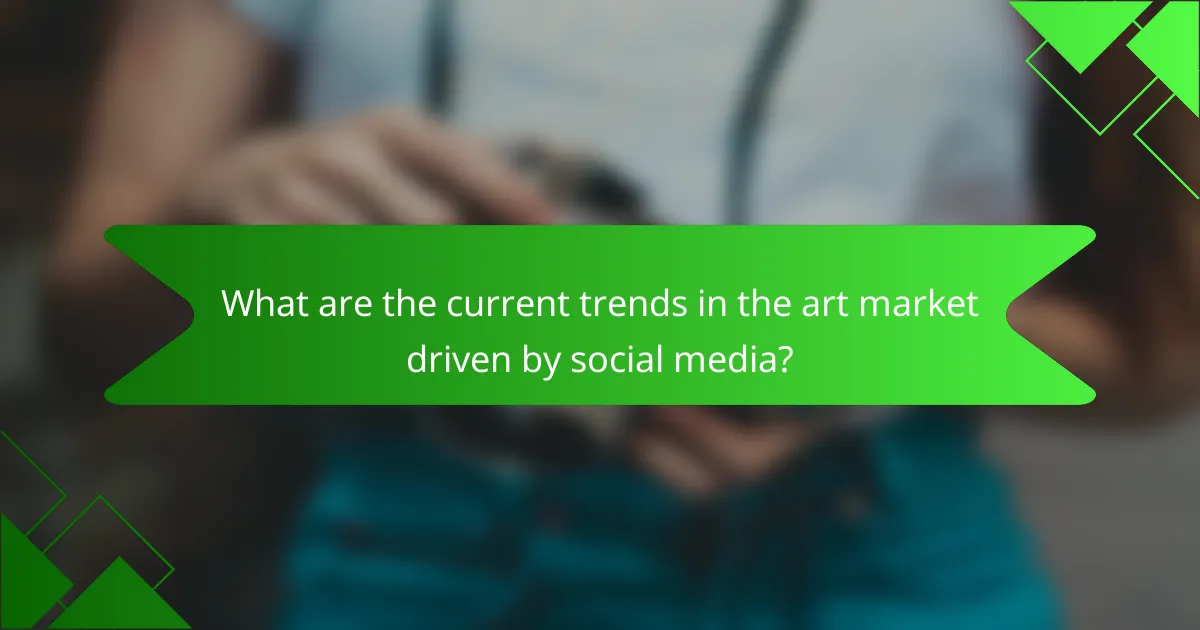
What are the current trends in the art market driven by social media?
Current trends in the art market influenced by social media include the rise of digital art sales, collaborations with influencers, virtual exhibitions, and the strategic use of hashtags for promotion. These elements are reshaping how art is bought, sold, and experienced globally.
Rise of digital art sales
The digital art market has seen significant growth, with sales increasingly occurring through online platforms. Artists are leveraging social media to showcase their digital works, attracting collectors who prefer the convenience of online transactions.
Platforms like OpenSea and Rarible have become popular for buying and selling non-fungible tokens (NFTs), allowing artists to monetize their digital creations effectively. This trend has opened up new revenue streams for both emerging and established artists.
Influencer collaborations
Influencer collaborations are becoming a key strategy in the art market, where artists partner with social media influencers to reach wider audiences. These collaborations can amplify visibility and create buzz around new works or exhibitions.
For example, an artist might team up with a fashion influencer to promote a limited edition print, leveraging the influencer’s follower base to drive sales. This approach not only enhances brand awareness but also fosters a sense of community among art enthusiasts.
Virtual exhibitions and galleries
Virtual exhibitions and galleries have gained traction, especially following the pandemic. Artists and galleries are utilizing platforms like Instagram and dedicated virtual gallery spaces to host exhibitions that can be accessed globally.
This trend allows for greater accessibility, enabling art lovers from various locations to experience exhibitions without geographical limitations. Additionally, virtual events often include interactive elements, such as live Q&A sessions with artists, enhancing engagement.
Use of hashtags for promotion
The strategic use of hashtags is crucial for promoting art on social media. Artists and galleries can increase their visibility by using relevant hashtags that connect them with potential buyers and art enthusiasts.
Common hashtags like #ArtForSale, #DigitalArt, and #ArtCollector help categorize posts and attract targeted audiences. However, it’s important to balance popular hashtags with niche ones to avoid getting lost in a sea of content.
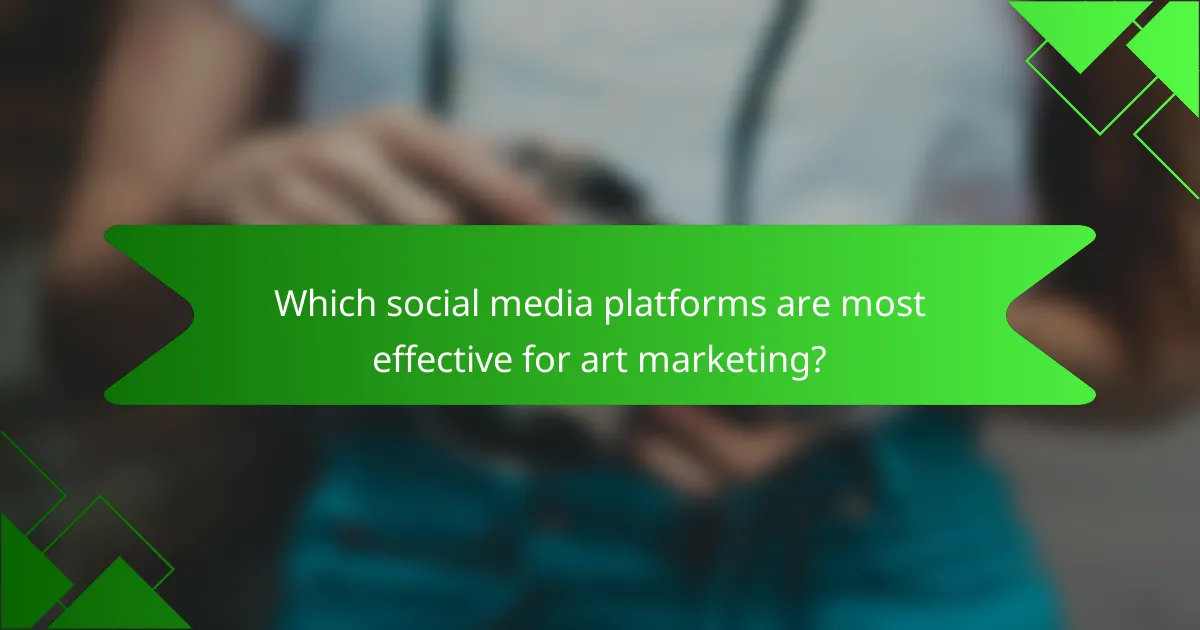
Which social media platforms are most effective for art marketing?
Instagram, Facebook, Pinterest, and TikTok each offer unique advantages for art marketing, catering to different aspects of audience engagement and content sharing. Choosing the right platform depends on your goals, target audience, and the type of art you promote.
Instagram for visual storytelling
Instagram is the premier platform for visual storytelling, making it ideal for artists to showcase their work. High-quality images and videos can capture attention quickly, and features like Stories and Reels allow for dynamic content that engages viewers.
To maximize impact, use relevant hashtags and engage with followers through comments and direct messages. Consistent posting and aesthetic cohesion can help build a recognizable brand identity.
Facebook for community building
Facebook excels in community building, allowing artists to connect with fans and fellow creators. Groups and pages provide spaces for discussions, sharing events, and promoting exhibitions, fostering a sense of belonging among followers.
Consider hosting live events or Q&A sessions to deepen engagement. Regularly updating your page with news, behind-the-scenes content, and interactive posts can keep your audience invested in your artistic journey.
Pinterest for inspiration sharing
Pinterest serves as a powerful tool for inspiration sharing, where users seek ideas and visual stimuli. Artists can create boards that showcase their work alongside complementary content, driving traffic back to their websites or online stores.
Utilize keywords in pin descriptions to enhance discoverability. Regularly updating boards with fresh content can attract new followers and keep existing ones engaged with your evolving portfolio.
TikTok for viral art trends
TikTok is rapidly becoming a hotspot for viral art trends, allowing artists to share quick, engaging videos that can reach a wide audience. Creative challenges and trends can help your work gain visibility and attract new fans.
Focus on short, captivating clips that highlight your artistic process or finished pieces. Engaging with trending sounds and hashtags can significantly increase your chances of going viral, making it essential to stay updated on current trends.

How can artists leverage social media for sales?
Artists can effectively leverage social media for sales by showcasing their work, building a personal brand, and engaging with their audience. By strategically using platforms like Instagram, Facebook, and TikTok, artists can reach potential buyers and create a community around their art.
Building a personal brand
Creating a personal brand on social media involves presenting a consistent image and message that reflects an artist’s unique style and values. This can be achieved through a cohesive visual aesthetic, a clear narrative about their artistic journey, and regular updates that resonate with their audience.
Artists should consider using specific hashtags related to their niche to increase visibility. Engaging in collaborations with other artists or influencers can also enhance brand recognition and attract a wider audience.
Engaging with followers
Engagement with followers is crucial for building a loyal customer base. Artists should respond to comments, ask for feedback, and create interactive content such as polls or Q&A sessions to foster a sense of community. This two-way communication helps followers feel valued and more connected to the artist.
Regularly sharing behind-the-scenes content or the creative process can deepen this connection. Artists might also consider hosting live streams to showcase their work in real-time, allowing for immediate interaction and potential sales opportunities.




